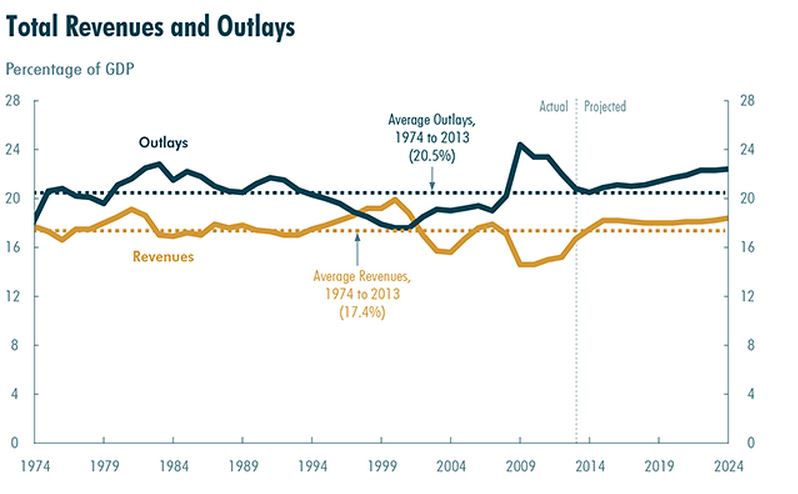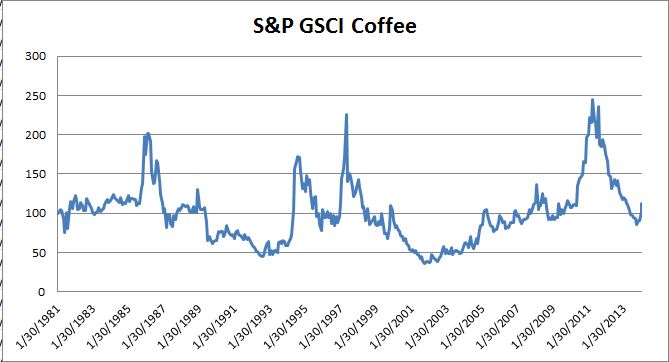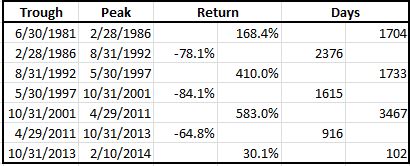In her testimony to the House Financial Services Committee on Tuesday, Fed Chairwoman Janet Yellen commented that with interest rates near zero the Fed must rely on such less traditional tools of monetary policy as forward guidance and asset purchases. Asset purchases are being phased out as tapering slowly ends quantitative easing. That leaves the Fed with forward guidance: telling the market and the world what it will do when a chosen economic indicator hits a particular number. In December 2012, the Fed offered forward guidance when it said that the Fed funds rate would remain between zero and 25 basis points until the unemployment rate dropped below 6.5%, as long as inflation was projected to remain below 2.5% and long term inflation expectations remain well anchored.
Inflation is one percent and long term inflation expectations are well anchored in low numbers. Now that the unemployment rate is 6.6% and trending down, the Fed is revising its forward guidance. Chairwoman Yellen, in the same testimony, noted that the FOMC said in December and January that its current expectation “is that it likely will be appropriate to maintain the current target range [0 to 25 bp]for the federal funds rate well past the time the unemployment rate declines below 6.5%.” Meanwhile, analysts are debating the accuracy and utility of the unemployment rate. These developments leave us with less trust in the monthly employment numbers and less comfort about what the central bank might do next.
For the Fed, the answer may be to be vague. We should stop kidding ourselves that the Fed, or anyone else, can confidently and competently forecast the reaction of the unemployment rate to monetary policy, economic shifts and politics a year or more in advance. For most of the history of the Fed, markets accepted that the Fed couldn’t offer precise schedules for future policy adjustments. Forecasting has improved, but not enough. A comment attributed to John Maynard Keynes, “When the data change, I change my mind; what do you do?” summarizes the difficulties with forward guidance.
Given cold and snowy weather in large parts of the nation, the weather is a favorite reason to not believe the employment numbers. Other arguments focus on why a person should be looking for a job as well as out of work to be counted as unemployed; if we counted full time students and retirees as unemployed, the number would be larger and meaningless. Behind all these explanations there is a Murphy’s Law of economic indicators, and the unemployment rate may be the current corollary. When the market focuses on a particular number as the key to understanding the future, that number loses reliability. Past efforts at gauging monetary policy tried various definitions of money and each was abandoned as it lost meaning.
Whether we like it or not, the economy, the future and especially the future of the economy is uncertain. A little obfuscation in pronouncements about future policy might acknowledge the uncertainty.
The posts on this blog are opinions, not advice. Please read our Disclaimers.








